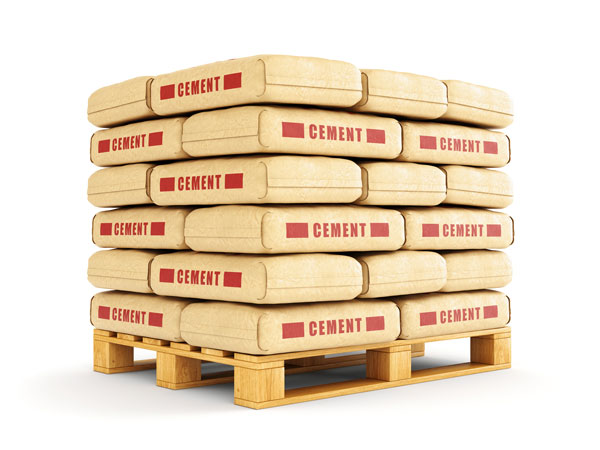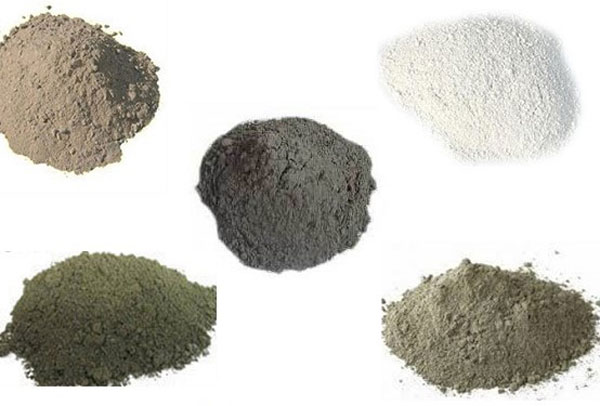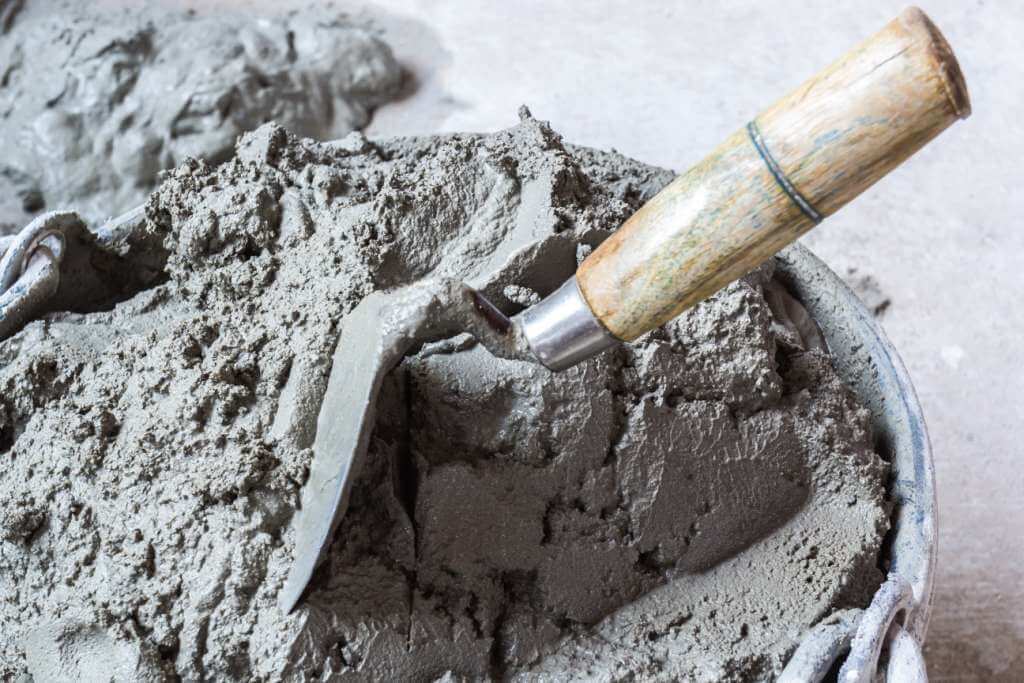Every person has a dream for beautiful and comfortable house. When we want to build a house, we plan the whole things. How much money we want in building a house? We compromise in things like interior or other things, but we cannot sacrifice on cement expense because we want strong and durable house.

Cement House
Importance in Construction
Cement is very important building material among others in construction industries. It has replaced all other building materials, like clay and lime, which ruled high for hundreds of years, in construction. It has an ability to hold the structure together.

Why Cement is Popular Building Material:
- It is one of the most popular construction material in the modern world.
- We can use it to bind other building materials together.
- In absence of it, lime with various admixtures was widely used as a natural material, in olden days.
- It has made the modern world possible.
It enables:
01. Tallest skyscraper, skyline of a metro
02. Expressways
03. Highways
04. Bridges
05. Tunnels
06. Dams
07. Canals
08. Schools & Colleges
09. Hospitals & our home
Cement is a chemical bonding material that gives physical shape to our dream house. It also ensures the long service life of the house.
According to the Cement Manufacturers Association, India is home to the world’s second largest Cement Industry and accounts for over 8% of the global installed capacity. The Indian cement industry is the largest consumer of flyash produced by thermal power plant of India. It also consumes almost 100% of slag produced by steel plant of India.
What Love is to Family, so is Cement to Home:
Natural materials like lime and clay have many limitations. But nowadays manufacturers produce cement in controlled condition. That makes it appropriable to use in construction industry.
Cement is cheap and nowadays it’s the best alternate binding materials in place of other binding materials like polymers, epoxy, etc… Hence cement has become most demanding material in the developing countries.
To know more read its Importance
Types of Cement

Portland cement is the most basic form of cement. But nowadays use of Portland Pozzolana cement has increased day by day.
Also Read:
Pros & Cons of Portland Pozzolana Cement (PPC)
Pros & Cons of Ordinary Portland Cement (OPC)
Special types of cements are also manufactured by different manufacturers to use in unusual environmental conditions. Such as:
Following are the list of different types of cement available in India, Europe and United States of America.
Types Available in India
- Ordinary Portland Cement (OPC)
- Portland Pozzolana Cement (PPC)
- Rapid Hardening Cement
- Extra Rapid Hardening Cement
- Quick Setting Cement
- Low Heat Cement
- Sulphate Resisting Cement
- Portland Slag Cement (PSC)
- High Alumina Cement
- White Cement
- Coloured Cement
- Air Entraining Cement
- Hydrophobic Cement
- Masonry Cement
- Expansive Cement
- Oil Well Cement
Types Available in Europe
Classification as per Euro EN 197-1
- CEM I (Portland cement)
- CEM II (Portland-composite cement)
- CEM III (Blast furnace cement)
- CEM IV (Pozzolanic cement)
- CEM V (Composite cement)
Types Available in USA
Classification as per ASTM C150
- Type I (Portland cement)
- Type II (Sulphate Resisting Cement)
- Type III (Rapid Hardening Cement)
- Type IV (Portland Pozzolana Cement (PPC)
- Type V (Hydrophobic Cement)
Composition or Raw Materials Used for Manufacturing of Cement
Generally, cement is a dark grey powder which is made of lime (CaO), Silica (SiO2), Alumina (AL2 O3), Iron Oxide (Fe2O3), Magnesium Oxide (MgO), Sulphur Trioxide (SO3), and Alkalis (K2O, Na2O).
To know more, read Composition of Cement.
Manufacturing
As per Portland Cement Association (PCA), Bricklayer Joseph Aspdin of Leeds, England first made portland cement early in the 19th century by burning powdered limestone and clay in his kitchen stove. With this crude method, he laid the foundation for an industry that processes mountains of limestone, clay, cement rock, and other materials into a powder so fine it will pass through a sieve capable of holding water.
Some manufacturer uses dry process and some uses wet process for manufacturing the cement.
In dry process, with the help of mill (grinder), manufacturers pulverize the raw materials into the fine powder. After that they keep the fine powder in separate hoppers. To make the clinker, manufacturers take this fine powder in correct proportion and feed that into rotary keen. They further grind the clinkers and adds gypsum, flyash, etc. and makes a clinker powder that is now usually known as cement.
To know the detail process, read dry process for manufacturing of cement.
In wet process, manufacturers add water into the dry powder of raw materials to make the slurry or blends. Blend is feed into the rotary kiln where clinkers are the output. They grind the clinkers and mix it with gypsum, flyash, etc. in required proportion that results into the cement.
To know the detail process, read wet process for manufacturing of cement.
Uses of Cement
We use various cement to construct a house depending upon the functional need of structure, design parameters, durability characteristics and environmental conditions of that particular location. Even one can use two or more types of cement in a single structure.
Cement has incredible uses when used in Reinforced Concrete (R.C.C.). Generally, we use it to make mortar and concrete.
Read other benefits of cement through the Infographic.
Properties of Cement
Good cement provides good strength to concrete or masonry. It makes concrete or mortar workable. It also helps the concrete and mortar to harden early and to resist moisture. Hence, to get the good concrete or mortar, cement needs following properties.
Following are the Physical and Chemical Properties of Cement.
Physical Properties:
- Fineness
- Soundness
- Consistency
- Strength
- Setting time
- Heat of hydration
- Loss of ignition
- Bulk density
- Specific gravity, etc.
Chemical Compounds:
- Tricalcium aluminate
- Tricalcium silicate
- Dicalcium silicate
- Ferrite
- Magnesia
- Sulphur trioxide
- Iron Oxide
- Alkalis
- Free Lime
- Alumina
To know more, read the properties of cement in detail.
Characteristics of Cement
In a particular environment, the characteristics of cement affects the properties of concrete and mortar. The use and selection of cement will depend on the strength desired, environmental factors, nature of structure i.e. mass concrete, initial strength gain needed, etc.
Before you build your house, get few useful tips on the best cement.
Transportation and Storage
Cement has a tendency to react with water either in liquid or in the form of atmospheric moisture. Moisture is a great enemy of the cement. To know more, read the effects of moisture on cement. To control the effect of moisture, use closed body truck to transport the cement on site and if possible, make good storage godown at site. Know the precautions before you transport the cement which helps to protect the cement during the transportation.
The quality of cement also depends on the storage period. Longer the storage period, higher the chances of getting affected by the moisture. Hence do not use old cement or test such old cement, before you use it. To know the recommended storage time, read storage life of cement. It is important to make the cement godown/warehouse or storage building at elevated ground. It protects the cement from the various environmental factors like damp, rain etc.
Read few more tips on cement godown.
Cement is a costlier material than the other ingredients of the mortar and concrete. It gets wasted during the transportation or while handling the cement. The wastage will increase the cost of construction work. Hence, it is necessary to prevent the wastage of cement. Read: Tips to prevent the wastage of cement.
Buying Tips
Before you purchase the cement, some points are very necessary to check on cement bags. Many things you have to keep in mind while you purchase the cement. We have already discussed the topic in detail. Read,
Must-Know Points to Check the Cement Bag Before Buying
Things to Keep in Mind Before Purchasing Cement, and
Material Buying Guide for Cement
Summary

Cement is a soft grey powder and a versatile binding chemical compound. It provides several options for construction in this modern age. We can use it to bond the other building materials like aggregates, sand, bricks etc.. It has different properties that makes it superior for building the various structures.
Cement, when mixed with water, transforms into a paste that binds and hardens. For detailed explanations, we can state that it is a binding agent. When we add water to cement, a chemical reaction, in form of hydration takes place into the paste. Generally, cement starts to set within the first 30 minutes. It gets fully harden within 600 minutes and achieves the compressive strength.
We can say that, when weighed and mixed with aggregates and water, cement can make a good concrete or mortar. It remains workable for a long period of time. Vice-versa, after a specific time, concrete gains proper compressive & flexural strength. This maintains long-term structure stability.Though masonry structures were possible with lime. But, the concrete roofs, large span structures, and structure subjected to heavy loads have become possible because of reinforced concrete. Further it would not have been possible without cement.
Though the Portland cement is very famous, with an advance of new research & technology and in a quest for conserving natural resources and reducing pollution now a days Pozzolana Cement have become more and more popular.
Must Read:
